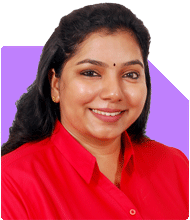Ramalingam Kalirajan |7911 Answers |Ask -Follow
Mutual Funds, Financial Planning Expert - Answered on May 18, 2024
He has an MBA in finance from the University of Madras and is a certified financial planner.
He is the director and chief financial planner at Holistic Investment, a Chennai-based firm that offers financial planning and wealth management advice.... more

My father is a 65 years old retired person who used to trade in market with the help of a broker and invest in MFs also. But he was forced to quit investing and withdraw all money to meet some tough and critical family concerns. Now he has around 2.75 lakhs to invest for creating as much money as possible. My question of behalf of him is - are aggressive hybrid funds and LC-MC funds along with a high risk flexi cap fund having high beta and sharpe good to go for his purpose?
Assessment of Investment Options
1. Aggressive Hybrid Funds:
Risk-Return Profile: Aggressive hybrid funds typically invest around 65-80% in equities and the remainder in debt instruments.
Benefits: Offers a balanced approach with exposure to both equity and debt, suitable for conservative investors seeking moderate growth with lower volatility.
Consideration: While these funds provide stability, they may not maximize returns compared to pure equity funds.
2. Large and Mid Cap Funds (LC-MC):
Risk-Return Profile: LC-MC funds invest in a mix of large and mid cap stocks, providing diversification across market capitalizations.
Benefits: Offers potential for higher returns compared to large cap funds while maintaining a degree of stability.
Consideration: May be subject to higher volatility due to exposure to mid cap stocks.
3. High-Risk Flexi Cap Fund:
Risk-Return Profile: Flexi cap funds have the flexibility to invest across market capitalizations based on market conditions and fund manager discretion.
Benefits: Offers the potential for high returns by capitalizing on market opportunities across sectors and market segments.
Consideration: Comes with higher risk due to the aggressive investment approach and exposure to high-beta stocks.
Recommendations and Considerations
1. Investment Horizon:
Assess your father's investment horizon and risk tolerance before making investment decisions.
Longer investment horizon allows for more aggressive investment strategies.
2. Diversification:
Consider diversifying the investment across multiple asset classes and investment styles to mitigate risk.
Combination of equity, debt, and other assets can provide a balanced and resilient portfolio.
3. Professional Guidance:
Engage a Certified Financial Planner (CFP) to provide personalized advice tailored to your father's financial goals and risk profile.
A CFP can help optimize the investment strategy and ensure it aligns with long-term objectives.
4. Regular Monitoring:
Regularly review the performance of the chosen funds and make adjustments as needed.
Stay updated on market trends and economic conditions to make informed investment decisions.
Final Thoughts
Considering your father's investment goals and risk tolerance, a combination of aggressive hybrid funds, large and mid cap funds, and a high-risk flexi cap fund can be suitable for maximizing returns while managing risk. However, it's crucial to conduct thorough research, seek professional guidance, and regularly monitor the portfolio to ensure it remains aligned with his objectives.
Best Regards,
K. Ramalingam, MBA, CFP,
Chief Financial Planner,
www.holisticinvestment.in
You may like to see similar questions and answers below
Omkeshwar Singh | Answer |Ask -Follow
Head, Rank MF - Answered on Feb 20, 2020
Ramalingam Kalirajan |7911 Answers |Ask -Follow
Mutual Funds, Financial Planning Expert - Answered on Sep 10, 2024
Ulhas Joshi | Answer |Ask -Follow
Mutual Fund Expert - Answered on Aug 23, 2023
Ramalingam Kalirajan |7911 Answers |Ask -Follow
Mutual Funds, Financial Planning Expert - Answered on May 20, 2024
Milind Vadjikar |988 Answers |Ask -Follow
Insurance, Stocks, MF, PF Expert - Answered on Feb 07, 2025
Milind Vadjikar |988 Answers |Ask -Follow
Insurance, Stocks, MF, PF Expert - Answered on Feb 07, 2025
Dr Dipankar Dutta |751 Answers |Ask -Follow
Tech Careers and Skill Development Expert - Answered on Feb 07, 2025
Pushpa R |50 Answers |Ask -Follow
Yoga, Mindfulness Expert - Answered on Feb 07, 2025
Ramalingam Kalirajan |7911 Answers |Ask -Follow
Mutual Funds, Financial Planning Expert - Answered on Feb 07, 2025
Ramalingam Kalirajan |7911 Answers |Ask -Follow
Mutual Funds, Financial Planning Expert - Answered on Feb 07, 2025
Ramalingam Kalirajan |7911 Answers |Ask -Follow
Mutual Funds, Financial Planning Expert - Answered on Feb 07, 2025
Ramalingam Kalirajan |7911 Answers |Ask -Follow
Mutual Funds, Financial Planning Expert - Answered on Feb 07, 2025
Ramalingam Kalirajan |7911 Answers |Ask -Follow
Mutual Funds, Financial Planning Expert - Answered on Feb 07, 2025
Ramalingam Kalirajan |7911 Answers |Ask -Follow
Mutual Funds, Financial Planning Expert - Answered on Feb 07, 2025
























